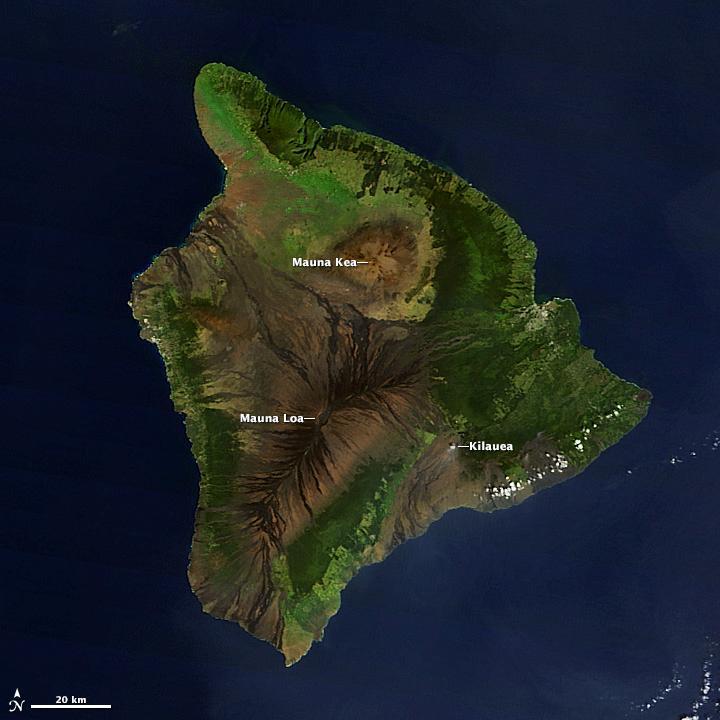Big Island of Hawaii#

Many of the worlds climate zones may be found on Hawaii for two related reasons: rainfall and altitude. The Big Island is home to Mauna Kea, the tallest sea mountain in the world at 4,205 m (13,796 ft) and the tallest mountain on the planet - if you measure from seafloor to summit, a distance of more than 9,800 m (32,000 ft).
Despite Mauna Keas height, it is Mauna Loa that dominates the island. With an altitude of about 4,169 m (13,678 ft) - the actual number varies depending on volcanic activity - Mauna Loa is the most massive mountain in the world. Temperatures dip low at the summits of these peaks, resulting in a tree-free polar tundra, pale brown in this image.
The mountains help shape rainfall patterns on Hawaii so that desert landscapes exist side-by-side with rainforests. In fact, average yearly rainfall ranges from 204 mm (8 in) to 10,271 mm (404 in). Trade winds blow mostly from the east-northeast, and the sea-level breezes hit the mountains and get forced up, forming rainclouds.
The east side of the island is lush and green with tropical rainforest. Much less moisture makes it to the lee side of the mountains. The northwestern shores of Hawaii are desert. Kona, on the western shore, receives plenty of rain because the trade winds curve back around the mountains and bring rain. Pale green areas on all sides of the island are agricultural land and grassland. The other environmental force painting Hawaiis canvas is volcanism.
Mauna Loa and Mauna Kea are both volcanic, though only Mauna Loa has been active recently. However, in this department, Kilauea is the superlative - it is one of the worlds most active volcanoes. A small puff of steam rises from an erupting vent in this image. Black and dark brown lava flows extend from both Kilauea and Mauna Loa.